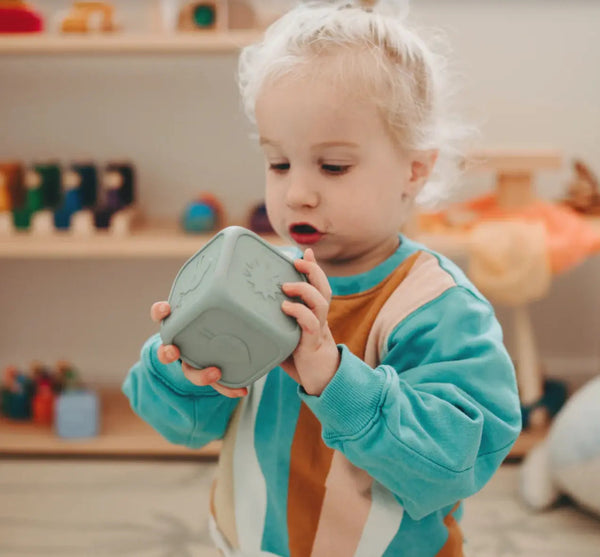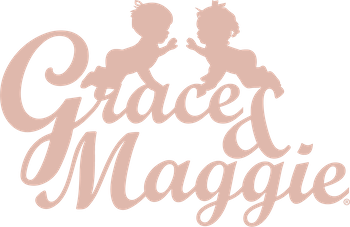
Creative Ways to Use a Feelings & Emotions Cube
Do you have an Emotions Cube, but you aren’t sure how to use it? We have come up with a list of all the fun things you can do with an Emotions or Feelings Cube.
A Feelings Cube is an interactive cube that showcases a picture of an emotion on each face of the cube.
They can encourage children to learn about these emotions and express themselves through play.

Jellystone Designs' Feelings Cube
Jellystone Designs' Feelings Cube is Crafted from non-toxic silicone, this cube has textured pictures that represent each emotion, accompanied by four synonyms to help increase a child's vocabulary.
Easy to clean, it's a steriliser, dishwasher, and warm soapy water-friendly. It is also a great sensory toy because of the textures and material it can be bounced, squeezed and rolled around.
A feelings cube serves as an excellent method for nurturing a child's emotional understanding. This engaging activity facilitates conversations around feelings, aiding kids in expressing their emotions in healthy ways.
It significantly contributes to fostering emotional regulation, the capacity to identify emotions and manage reactions effectively.
Once a child understands the concept of this toy, it becomes a tool they can use in the future to express their emotional needs to you in a clear and concise way.
Games you can play with an Emotions Cube

Before starting these games, make sure you have looked at the cube with your child and explained what all the faces mean.
This way the games become more fun as they aren’t frustrated when they can’t name the picture on the cube.
Each of these games gets increasingly more difficult for children as they age and gain a greater awareness of different feelings and their language skills evolve.
Make sure you pick a game or adapt the game so that it is at an appropriate difficulty level for the child playing.
Name the Emotion

Take turns rolling the dice and identifying the emotion it lands on.
Make the game fast paced and have some fun with it.
It's a perfect beginner-friendly game that encourages emotion recognition and participation without overwhelming young players.
Alternative: To increase the competitiveness of the game for added excitement, prepare tokens (paper cutouts or small toys) to reward each correct answer.
- Place these tokens in the centre.
- When a player answers correctly, they claim a token; the player with the most wins!
- Or if your child doesn’t like competing or is too young to name them correctly yet then maybe as a reward they get to pick which game to play next.
Emotion Charades

This game is more fun with extra players.
It is more about acting it out.
- Find a space in the house where you can move around freely.
- Take it in turns rolling the dice out of sight of the other players.
- The person that rolls the dice now acts out the emotion on the cube for the other players to guess what it is.
- Whichever player guesses it correctly gets to act it out next.
- If the group is struggling and nobody is guessing it then the player rolling the dice can give a verbal clue or make a sound associated with that emotion (eg. ‘Grr” for anger or ‘giggling’ for happiness).
Emotions Art Game

- Take it in turns rolling the dice out of sight of the other players.
- The person that rolls the dice now draws, paints or even sculpts (maybe some playdoh) out the emotion on the cube for the other players to guess what it is.
- Whichever player guesses it correctly gets to draw it out next.
- Try putting a time limit on this game. Maybe one mintue to draw, and one minute to guess.
Sharing Emotions Game

Take turns rolling the dice and whichever emotion it lands on, you need to describe a time you’ve experienced this emotion.
To make it more difficult you can add follow up questions.
Here are some question examples:
- How did you know you were feeling this way?
- What things make you feel happy?
- What things make you feel proud?
- What do you like about yourself that helps you feel confident?
For angry/sad emotions:
- Was there anything that helped make you feel better? If yes, what was it? If no, can you think of some ideas that might help in the future?
- If you feel this way again, who is a safe adult you could talk to?
- Is there anything someone could do to help you? A hug? Tell a joke?
- Did this emotion affect your behavior at the time?
- What are some safe ways you can get your anger/sadness out? (yelling into a pillow, having a cry, a hug, exercising, doing something you love).
- What are some things that angry/sad people do sometimes that hurt other people's feelings?
Alternatives to the game:
Personal Story - Get everyone in the group to share a personal story about the same emotion rather than taking turns.
This is especially helpful for younger kids who may need a role model to show them how to play the game, this will help them understand and then they can more easily draw on their own experiences.
Another room - You could get the person rolling the dice to do it in another room so that the audience doesn’t know which emotion the story is about.
That way when the storyteller thinks of a story relating to that emotion and tells them, they need to think about how the storyteller might have felt.
This is quite a complex version of the game as they need to reflect on the story, put themselves in someone else's shoes and then guess what emotion they might have felt.
They might be surprised that in the story they might have felt happy but the storyteller felt sad for example.
It can teach them that everyone experiences events differently and not everyone will feel the same.
This game is suited more for children over about 6 years old when they start becoming more aware of the people around them.
Certain children might face difficulty recalling specific emotions. Feel free to assist by sharing your own observations or personal experiences.
If needed, tackle one side of the cube at a time until completion Wrap up each session in a positive tone by discussing their beloved activities that bring joy, laughter, or a smile.
Consider engaging in an activity from their 'happy' side together to conclude on an uplifting note

Looking to purchase a Feelings Cube? We stock Jellystone Designs' Feelings Cube which are featured in this article. Pop over to Grace & Maggie.
Written by Laura Agrimi, mother of 2 and owner of Grace & Maggie.
Online store - Open 24 hours
orders@graceandmaggie.com.au
PO Box 2852, Cheltenham, VIC 3192
Melbourne, Victoria, Australia
 Shop Now with Afterpay
Shop Now with Afterpay 